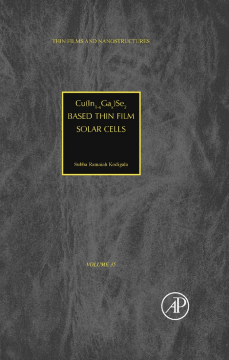
Additional Information
Book Details
Abstract
Cu(In1-xGax)Se2 Based Thin Film Solar Cells provides valuable contents about the fabrication and characterization of chalcopyrite Cu(In1-xGax)Se2 based thin film solar cells and modules. The growth of chalcopyrite Cu(In1-xGax)(S1-ySey)2 absorbers, buffers, window layers, antireflection coatings, and finally metallic grids, which are the sole components of solar cells, is clearly illustrated. The absorber, which contains multiple elements, segregates secondary phases if the growth conditions are not well optimized i.e., the main drawback in the fabrication of solar cells. More importantly the solutions for the growth of thin films are given in detail. The properties of all the individual layers and single crystals including solar cells analyzed by different characterization techniques such as SEM, AFM, XPS, AES, TEM, XRD, optical, photoluminescence, and Raman spectroscopy are explicitly demonstrated. The electrical analyses such as conductivities, Hall mobilities, deep level transient spectroscopy measurements etc., provide a broad picture to understand thin films or single crystals and their solar cells. The book clearly explains the working principle of energy conversion from solar to electrical with basic sciences for the chalcopyrite based thin film solar cells. Also, it demonstrates important criteria on how to enhance efficiency of the solar cells and modules. The effect of environmental factors such as temperature, humidity, aging etc., on the devices is mentioned by citing several examples.
- Illustrates a number of growth techniques to prepare thin film layers for solar cells
- Discusses characterization techniques such as XRD, TEM, XPS, AFM, SEM, PL, CL, Optical measurements, and Electrical measurements
- Includes I-V, C-V measurements illustrations
- Provides analysis of solar cell efficiency
- Presents current trends in thin film solar cells research and marketing
"Researchers developing solar cell materials will greatly appreciate and benefit from this book. It provides much in-depth technical detail on a wide variety of important solar cell materials, which would otherwise be scattered over many technical journal papers. The huge amount of material property data in the form of graphs, tables, and images makes this book a valuable resource for the solar cell community, and a worthwhile addition to the interested reader’s library." --Electrical Insulation Magazine
